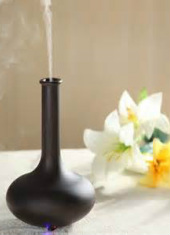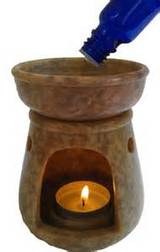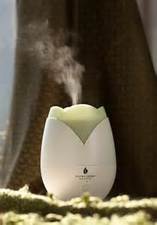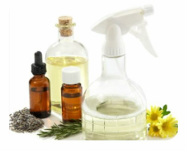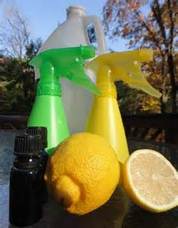|
3 ways we suggest you consider using
Essential Oils: [AROMATICALLY / TOPICALLY / AROUND THE HOME] ___________________________________________________________________ Aromatically/Inhalation: The aromatic application is the most widely known and used. Most of us understand that essential oils smell good and can be used as a deodorizer or to freshen up the home. But there is more to the aromatic application than just smelling good. In the same way that negative compounds, such as chemical cleaners or gases can be absorbed into our blood stream through inhalation, so can the positive properties of essential oils. Inhalation can quickly effect the respiratory system, including the sinuses. Aromatic application can also have a positive affect on headaches, appetite, hormones, mood and so on. They've been shown to increase indoor air quality, reduce chemicals in the air, and fight airborne illnesses. And the positive compounds and their properties, once within our blood stream, can increase our immune system response or promote well-being in a multitude of ways. This is because the "aroma" you breathe is actually a fine mist or vapor containing all the same properties of the oil itself. And it is due to the fact that the olfactory system is closely connected to the limbic system of the brain that essential oils have such a positive effect on the various systems of the body. Here are some aromatic essential oil uses:
Topically: Learning how to use essential oils topically is a little more involved, but still fairly simple. Oils applied topically provide an almost immediate delivery through the circulatory system as well as for skin conditions, aches, pains, bruises, and wounds. Please remember that although most essential oils can be used topically, HOW they are used will vary from oil to oil. Some come with precautions, but even those that don't can still affect some skin types, causing itchiness or a rash if not used properly. Know your skin type. Do you tend to have sensitive skin? Then always dilute with a *carrier oil. Are you not sure? Test an area of your inner arm first. *[ABOUT CARRIER OILS: Some examples of carrier oils are: coconut, jojoba, grape seed or olive oils, to name a few. An example of dilution using a carrier oil would be as follows: Add 1 drop of any essential oil to 1 teaspoon of a carrier oil [this is a 1% solution]. You can experiment with different strengths (solutions), based on the use. Over time, your ability to decide on the mixture will become more skilled and you'll quickly begin to learn the amount of carrier to use for certain applications.] Ways you can use essential oils topically include:
Around the Home: Learning how to use essential oils around the home is a great way to reduce the chemicals in your house, while cleaning and refreshing the environment in which you live. Essential oils can be used in washing dishes or even your clothes. Add a drop of Orange or Lemon Oil to your dishwater, washing machine or to the wet clothes before they go in the dryer. Household essential oil uses include oils like lemon that will remove many stains, as well as gum, stickers and other residue from most surfaces. Other oils like Melaleuca, Lavender, Lemon, Lime, Thyme, Clove and others, have antiviral properties and can be added to natural homemade cleaners, such as sprays, carpet deodorizers, furniture polish and so on. Some people even add oils to household paint, craft paint or supplies, children's clay or dough, etc. Safety Considerations:
|
CLICK ON THE BOOK BELOW TO ENLARGE IT AND VIEW SOME OF THE EXCELLENT WAYS YOU CAN USE AND COMBINE ESSENTIAL OILS:
CLICK ON THE BOOK BELOW TO ENLARGE IT AND READ ABOUT THE WONDERFUL USES FOR THE 6 OILS FOUND IN OUR BASIC OILS KITS:
|
| StoneWoodArtisan Oils |
|
